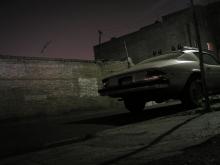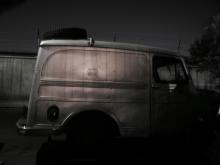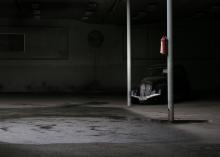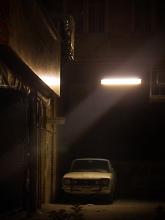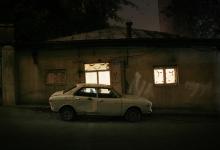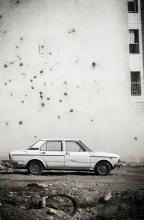The dark city of Mehrdad Naraghi
In my opinion the photography and also the art vision is now a global vision. It doesn’t mean that regional differences or different cultures are not important or they are not exist but they are not as obvious as they were before. They are so deep in the world that you could get every thing you want online.
As I said in previous question, regional differences in my works appear in the scenes I choose to show, in darkness, in sadness, in places that nobody exist in that.
Fabiano Busdraghi: You work, expose and sell your work mainly in Iran or abroad? How to describe the cultural and artistic life in Iran today?
Mehrdad Naraghi: I do all these three in Iran. Rarely do I get opportunity to expose my works abroad. During my travels I have chances to take photos in other countries, but financial matters don’t allow me to do a project in one place with efficient time.
Despite many galleries are opened in Tehran, art economy is still not serious. Especially in photography it is meaningless. The work prices are so less than world prices, many people are not interested to buy photo, art critics are so weak.
Government supports the artists only in directions that they want them to be. And big companies are not interested to be a sponsor for an art project. Publishers prefer to print photo books that contain pictures of nature or historical places of Iran. So living as a freelance photographer in Iran is a daydream.
Fabiano Busdraghi: The diffusion of your work is done by galleries, exhibitions, paper publications, etc, or is entrusted mainly to artistic circuits on Internet? What do you think of these initiatives? What are your favorite sites? Do you read any photo e-zine or online art magazine?
Mehrdad Naraghi: In first step I show my works in gallery then I put them on the web or in the magazine. Mostly I’ve got comments from audiences who see my works in different sites. I am grateful that I could establish my works on internet which many people see and write their ideas. It’s more economic than publishing a book and also it is distributed all over the world. Beside that I could see many artist works’ on internet which their books are not available in Iran.
Nowadays I am one of artreview members. It is a site that artists put their works and profile and many artists and curators see the works and discuss about it. It also has an online art magazine.
Fabiano Busdraghi: Sometimes photographers remember a photograph that have not taken because of technical problems, or because they preferred not to bring the camera to the eyes. These “never taken pictures” often remain long time in the memory and become loved images like the real ones. If it happened, can you tell the story of one of these photos?
Mehrdad Naraghi: Many of these situations happen when I am driving in the road. I see many scenes but I pass with high speed. Furthermore the state that you describe as never taken photographs is one of my bad dreams. I see scenes that are perfects when I’m sleeping. Light, Color, Composition are in the best level, but I couldn’t take it because of battery loss, finishing negative or something like this, and these scenes are in my mind all day.
Fabiano Busdraghi: I am doing a census among photographers: what are the fundamental characteristics of photography? What allows us to say that a photograph is precisely that? In particular, what differentiates the photographic image from other types of images, such as painting, lithography, video projections, etc… Do you think one can define what is photography and what it is not?
Mehrdad Naraghi: Showing the single moment which happens in 1/60 second or less is photography significant. These moments are not as same as previous or following moments. As an art photographer I think if an image contains photography aesthetic we could call it photograph, even if it is made by mix media or lithography or even painting.
It’s like difference between painting or drawing or illustration. They are so close. We could take a picture by camera but the result may be more close to painting than photography. Different techniques and materials make them very close to each other. In my opinion it’s more important to discuss about the value of picture as an image than argue about the name we call it.
Fabiano Busdraghi: Can you choose one of your image and tell its history?
Mehrdad Naraghi: I’ve taken many of my photos in ordinary places. They are the scenes that I select from my everyday path. So there is not such a history behind them, which is remarkable, maybe some personal notifications.



